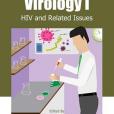《Virology I: HIV and Related Issues》是一本圖書。
基本介紹
- 外文名:Virology I: HIV and Related Issues
- ISBN:9781477555040

《Virology I: HIV and Related Issues》是一本圖書。
管永軍,博士。現任職美國馬里蘭大學醫學院人體病毒學研究所。主要研究方向為HIV等病毒抗體的製備。管永軍已在PNAS、JournalofVirology、PloSOne等雜誌上發表文章多篇,並申請多項專利。其實驗團隊在HIV疫苗方面取得若干研究進展。他們在HIV病人的外周血淋巴細胞中分離到一株抗體,能夠和其它抗體形成互補,抑制現有抗體所不...
現任武漢大學病毒學國家重點實驗室副主任,武漢大學生命科學學院病毒學系副主任。人物經歷 學習經歷 2009:美國愛荷華州立大學, Assistant Scientist III, HIV疫苗形成 2008-2009:美國克里夫蘭臨床醫院,研究助理,RNA病毒的基因表達和感染機制 2005-2009:美國克里夫蘭臨床醫院,博士後,RNA病毒的基因表達和感染機制 2002...
喬文濤,女 教授,博士生導師。2002年9月留校任教。2003-2004年美國內布拉斯加-林肯大學病毒學中心NIH John E.Fogarty項目合作研究。2010年入選教育部新世紀優秀人次支持計畫,天津市生物化學與分子生物學學會理事、秘書長。履歷 長期從事分子病毒學研究,研究內容集中於反轉錄病毒的分子生物學及病毒與宿主的相互作用,...
王孝偉,女,博士,北京大學藥學院副教授,碩士生導師。個人經歷 1988年畢業於北京醫科大學藥學院,同年留校從事有機化學的教學與科研工作。歷任北京大學藥學院助教、講師、副教授。2008年在日本進修。在此期間,參與了多項課題的研究。研究方向 對HIV、HBV病毒作用的靶點、抑制劑的作用機理、構構關係及耐藥問題進行研究...
Current Pharmaceutical Design (SCI二區) 客座編輯;Journal of clinical research in HIV AIDS and prevention榮譽編委;Symbiosis Journal of Virology & Retrovirology編委;計算生物學雜誌編委。Current Pharmaceutical Design,Plos One等雜誌審稿人。教育經歷 (從大學本科開始,按時間倒排序):2001-09 至2007-07 ...
許曉東,男,1967年10月出生於黑龍江省甘南縣,博士,西北農林科技大學教授,博士生導師。人物經歷 1989年在北京農業大學農業微生物專業獲學士學位,1995年在北京農業大學微生物學專業獲碩士學位,2009年在英國雷丁大學(University of Reading)病毒學專業獲博士學位。2009年11月到西北農林科技大學生命科學學院工作。2001....
楊勇波,男,1979年12月出生,博士,現任華中師範大學講師。主要學術兼職:主要研究領域:RNA病毒複製複合體形成以及HIV與膠質細胞的相互作用 學習工作經歷:2009年12月:武漢大學,獲博士學位;2002年7月:武漢大學,獲碩士學位 承擔科研項目情況:國家自然科學基金(31000087):中國主要流行亞型HIV-1 TAT蛋白在HAD發生中...
承擔 ““HIV-1嵌合基因的構建、表達及用於抗體測定的試劑盒研製” (湖北省衛生廳項目)、“NEF重組蛋白抗類風濕病效應的實驗研究”(宜昌市科技計畫項目)等省市以及三峽大學重大研究課題近10項,在《Journal of Virology》、《中華病理學雜誌》、《中華醫學雜誌》等國內外權威或核心刊物上以第一作者發表研究論文10...
劉奮勇,病毒學、生物化學專業,美國籍,現為美國加州大學柏克利分校公共衛生學院終生教授,同時還任加大柏克利分校比較生物化學學科主任。劉奮勇博士先後師從美國科學院院士、世界著名的皰疹病毒專家、芝加哥大學 Bernard Roizman教授和諾貝爾獎獲得者、耶魯大學Sidney Altman教授。劉奮勇博士目前主要從事HCMV研究以及治療這類病...
2009-至今: 美國天普大學醫學院解剖及細胞生物系正教授/ Professor, Department of Anatomy and Molecular Biology, Temple University, USA 2002-2009: 美國賓夕法尼亞大學醫學院費城兒童醫院傳染及免疫科病毒室主任/ Director, Virology Laboratory, Division of Infectious Diseases, Children’s Hospital of ...
Retrovirology、Human Gene Therapy等的審稿人。業餘時間,張輝博士長期擔任中山醫美東校友會費城地區理事,是華夏中文學校新澤西櫻桃山分校的創辦人兼首任董事之一。最近受中山大學邀請,張輝博士將回國全職擔任中山大學特聘教授,負責組建中山大學人類病毒學研究所,主要從事HIV的分子生物學的研究和抗病毒藥物的開發。
《衛生檢疫學》、《衛生微生物學實驗》、《病毒學檢驗》、《病毒學檢驗實驗》、《免疫學檢驗》和《分子生物學檢驗技術》等。科研項目 1. 貴州省科技計畫項目,貴州省重點地區男男性行為人群HIV新發感染及危險因素研究,2018年8月-2020年12月,項目編號:黔科合基礎[2018]1095,10萬,進行中,參與 2. 四川省...
和科睿唯安(Clarivate)2023年度“全球高被引科學家”榜單。社會任職 上海市生物工程學會細胞治療專業委員會會員。Frontiers in Immunology 和Viruses 的客座編輯;HIV: Current Research和Journal of HIV and Retrovirus雜誌編委會成員。Cell Discovery, eBioMedicine, Journal of Medical Virology 等20多個雜誌審稿人。
5. Zhang, Z., Perković, M., Gu, Q., Balakrishnan, K., Sangwiman, A., Häussinger, D., Lindemann, D., Münk, C. HIV-2 Vif and foamy virus Bet antagonize APOBEC3B by different mechanisms. Virology. (2021).6. Zhang, Z., Gu, Q., Montero, M. de M., Bravo, I.G....
3.Bishi Fu, Feng Sun, Baolin Li, Lei Yang, Yan Zeng,, Xiulian Sun, Fanhong Xu, Simon Rayner, Zhihong Hu, Shou-Jiang Gao,Linding Wang*. Kaposi’s sarcoma-associated herpesvirus seroprevalence and risk factors in Xinjiang,China. Submitted to Journal of Medical Virology, 2009 Vol.81:1422-...
Zan Huang, Lin Cheng, Shuihong Yao, Di Qin, Xiuying Chen, Qiao Tang, Zhigang Lv, Ling Zhang and Chun Lu. Intracellular Tat of Human Immunodeficiency Virus Type 1 Activates Lytic Cycle Replication of Kaposi’s Sarcoma-Associated Herpesvirus: Role of JAK/STAT Signaling. Journal of Virology, 200...
Zhang , Feng-Liang Liu , Ya-Bin Jin, Qing Deng, Bei-Lei Liu, Min Zhuo, Xiao-Hui liu, Yong-Tang Zheng, Fei Ling. The effects of TRIM5α polymorphism on HIV-2ROD and SIVmac239 replication in PBMCs from Chinese rhesus macaques and Vietnamese-origin cynomolgus macaques. Virology, Volume...
Capital)在新加坡合作創建的CombinatoRx子公司,開發新的抗傳染性疾病治療方法與產品。曾任中國科學院上海巴斯德研究所外方所長。研究領域 病毒學 virology, influenza, SARS, infectious diseases, HIV, microbiology 在巴黎巴斯德研究所獲得博士學位(1994年),並在此完成了愛滋病毒感染的博士後論文(1996年)。
於曉方,浙江大學醫學院教授,國際著名的病毒學家,公共衛生學博士(美國哈佛大學)。曾任吉林大學白求恩醫學院轉化醫學研究院教授,美國約翰斯霍普金斯大學公共衛生學院教授,博士研究生導師。主要成績 一直從事人愛滋病病毒和猿猴愛滋病病毒致病分子機制,宿主對愛滋病病毒免疫應答,抗愛滋病新的藥物靶點的開發以及愛滋病...
張遠,1959年出生於中國台灣,病毒學家,美國國家科學院院士,美國匹茲堡大學醫學院病理學特聘教授。張遠於1981年獲得史丹福大學學士學位;1987年獲得猶他大學醫學院醫學博士學位;1989年擔任加州大學舊金山分校解剖病理學高級專科住院實習醫生;1991年擔任史丹福大學醫學院神經病理學研究員;1993年進入哥倫比亞大學工作;2000年...
2001年末至2004年,在哈佛大學醫學院微生物學和分子遺傳學系作為博士後繼續分子病毒學研究。2004年,他被任命為該系講師。2007年下半年,李文輝回國加入北京生命科學研究所,並被聘任為研究員。他專注於病毒感染和宿主免疫力領域的研究,尤其是乙型和丁型肝炎病毒(HBV和HDV)的進入機制。2012年,他的團隊成功地發現了...
BiochemicalandBiophysicalResearchCommunications258(2):313-321.(影響因子,2.823) 3.ShimizuN,SodaY,KanbeK,LiuHY,JinnoA,KitamuraT,andHoshinoH(1999)AnorphanGproteincoupledreceptor,GPR1,actsasacoreceptortoallowreplicationofhumanimmunodeficiencyvirustypes1and2inbrain-derivedcells.JournalofVirology73(6)...
Facts High-Yield Facts in Microbiology Physiology and Molecular Microbiology Questions Answers Virology Questions Answers Bacteriology Questions Answers Rickettsiae, Chlamydiae, and Mycoplasmas Questions Answers Mycology Questions Answers Parasitology Questions Answers Immunology Questions Answers Bibliography Index ...
代表工作包括:1) 新冠病毒與相關冠狀病毒的抗體研究及疫苗開發;2) C型肝炎病毒和伊波拉病毒的疫苗開發與評價體系的建立;3) 對HIV感染者體內廣譜中和抗體相關轉錄因子和免疫特徵的鑑定;4) 針對NK細胞的免疫檢查點抗體的開發與套用。實驗室將利用分子生物學、病毒學和免疫學的方法,結合系統生物學(抗體...
11. Hao Ruidong, He Jing, Liu Xing, Gao Guozhen, Liu Dan, Cui Lei, Yu Guojun, Yu Wenhui, Chen Yu, Guo Deyin*, 2015. Inhibition of Hepatitis B Virus Gene Expression and Replication by Hepatocyte Nuclear Factor 6. Journal of Virology, 89, 4345-55.12. Sun Ying, Wang Zidao, Tao ...
2001年至今 中國科學院“百人計畫”研究員引進回國。現為《中國病毒學》和《病毒學報》編委,BMC Microbiology,Associate Editor 研究方向 主要研究方向 逆轉錄病毒複製的分子機理。HIV引起的愛滋病嚴重威脅人類健康,對HIV複製機理的了解是開發有效治療策略的前提和基礎。與病毒長期共存過程中,宿主進化產生了多種機制限制...
40. High-level expression and purification of HIV-1 gene , Advances of molecular virology, International Conference on Medical Virology, P62, Beijing , China,Oct. 19-22, 1998 41. 甲病毒用作基因工程載體的研究進展,國外醫學(微生物學分冊),1998,21(2): 5-11 42. 檢測狂犬病毒...
